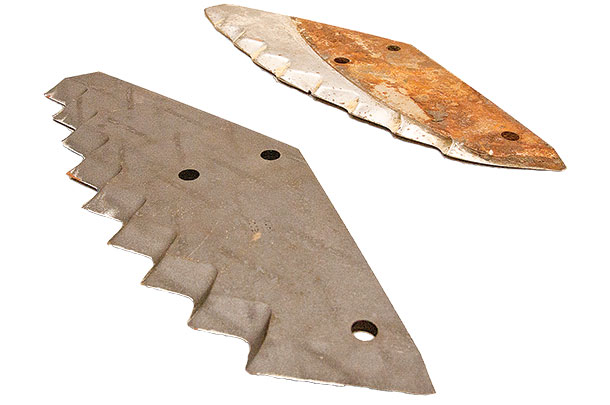You rely on your TMR mixer each and every day to deliver a high-quality ration to your cows. But is your ration consistent each day? Are you routinely checking your mixer’s maintenance needs?
Your cows depend on a consistent, nutritious ration to reach the milk production you need to maximize your bottom line. No matter the type, size or configuration of mixer, routine maintenance is vital to any operation.
This handy list can help you properly maintain your operation’s TMR mixer on a regular basis. (This list pertains to all mixer types unless otherwise noted.) Be sure to consult your operator’s manual to see what equipment you will need and the correct service intervals.
Lubrication
Greasing helps extend the life of moving parts by reducing friction and heat. Failure to apply proper amounts of grease at the correct intervals could cause premature wear on the machine.
For every eight hours of use, be sure to grease all bearings and also remember to replace any bearings that are worn or in bad shape; while applying grease, make sure all bearings take it. Be sure to grease all PTO drivelines and make sure they are able to telescope freely.
Daily and weekly maintenance
Your TMR mixer is an everyday necessity on your livestock operation, so of course it requires daily maintenance to make sure all of its components are properly functioning.
Safety should always come first when working on or operating any type of machine. Be sure to wear proper safety attire such as safety glasses, ear plugs and gloves when you work any machinery.
Make sure all safety shields are secured and in their proper positions before operating your mixer. PTOs must be covered. Also be sure to test all the lighting and replace lights that are burnt out or broken.
The next step is to inspect and replace any worn or damaged hydraulic hoses. If any are broken, repair them immediately. If the system is under pressure, do not inspect the hose with bare hands. A high-pressure spray of hydraulic oil could cause serious injury.
On vertical mixers only, augers are important components to check during the week. It is important to make sure they are correctly timed. If you need to change the timing, you can accomplish this by disconnecting the driveline from the input shaft to the planetary gearbox underneath, rotating the auger to the desired position and reconnecting the driveshaft.
Monthly maintenance
On a monthly basis, schedule an overall mixer inspection to ensure the mixer is giving you the results you expect. First, processing hay with badly worn knives slows down mixing and wastes fuel, so inspect and replace any worn knives on the augers in your mixer.

If worn, replace with the original equipment manufacturer parts for the best result. Also examine the auger flighting, which may also become worn; badly worn flighting can greatly reduce mixing performance, leading to inconsistencies in the bunk. For an auger in a vertical mixer, adjust or replace a worn auger lead-edge scraper.
Another component to routinely check is the tub and auger troughs. Over time, these components will wear through the sidewalls. Monitoring the high-wear areas will give a good indication as to when the mixer needs to be relined or replaced.
Purchasing a mixer with stainless steel liners will help preserve the structural integrity of your new TMR mixer by protecting the shell of the mixer from excess wear.
Next, double check the oil levels in all gearboxes. Be sure to change the gearbox lube if the service interval is due. Follow the instructions in your operator’s manual. On reels and four-auger mixers, maintain a correct oil level in the mixer oil bath.
Also check for any worn drive chains, sprockets or drive belts and replace them as necessary. The same tip can be applied when working on the oil drive chain.
Maintaining the scale system is as critical as maintaining the mixer itself. Check the scale indicator and wire connections to ensure all are in working order. Pinched or cracked scale wires can lead to inconsistent scale readings, which will throw off ingredient weights.
Make sure the weigh cells are free from obstruction or build-up. Also, on vertical load cells, routinely check to make sure the arms are free to swivel and their retainer bolts are tight.
Reel mixers require inspection of the reel wipers on a regular basis to fully clean out the mixer and reduce overall horsepower.
Other tips for TMR maintenance include checking the tire pressure, making sure the wiper/cross tube springs are free to move and in good shape (on reel mixers only), double checking to make sure all chain tighteners are functional and adjusting the shield latches on the oil bath for better sealing on reel and four-auger mixers.
This list provides only a broad overview for TMR mixer maintenance. Please consult your owner’s manual or contact your local dealer for more information, as each mixer is different.
Taking the time to provide proper maintenance on your mixer will help ensure a consistent TMR ration years after the initial purchase.





